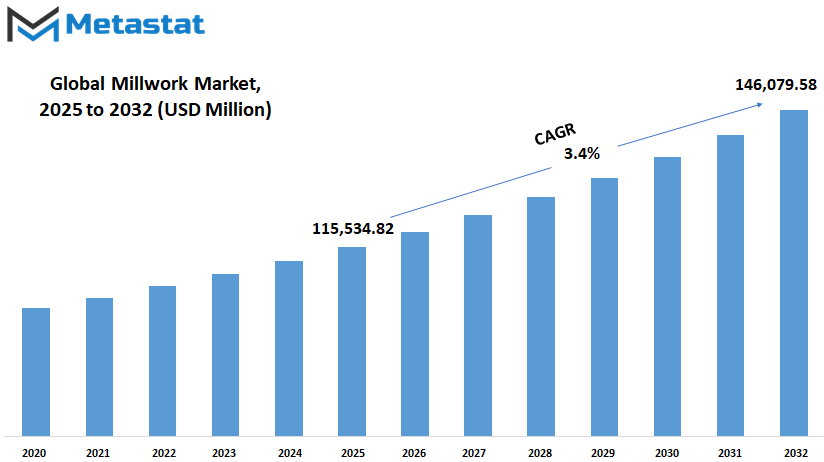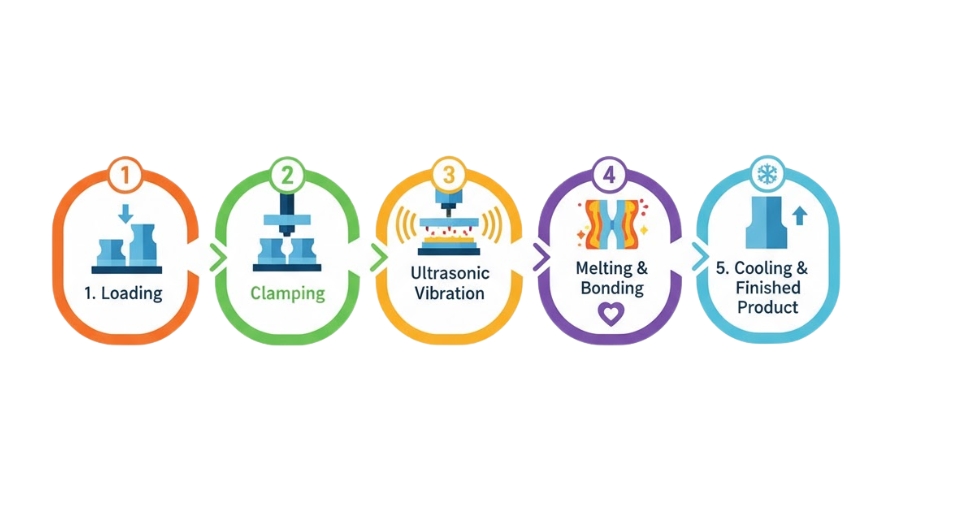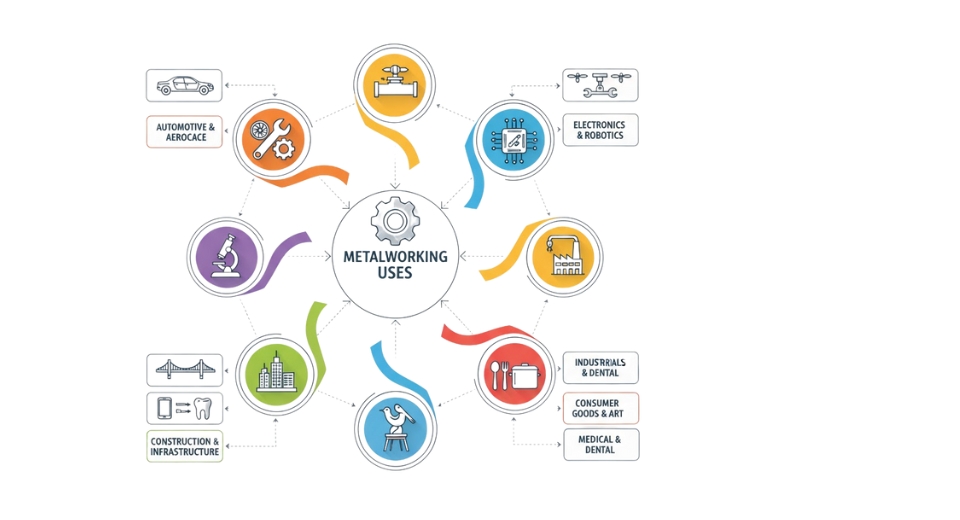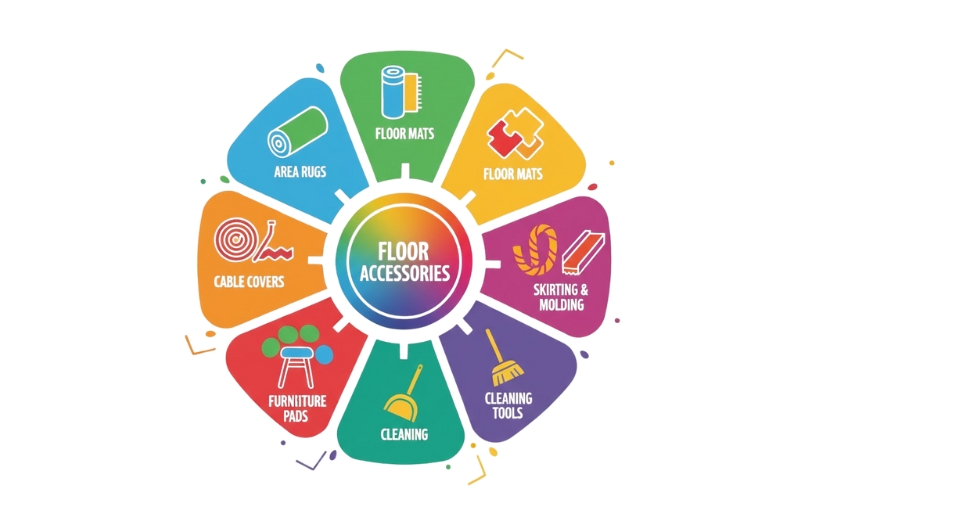MARKET OVERVIEW
The Global Millwork market located on the construction and interior design scene shall continue to cement its position as a key segment for architectural detailing, custom woodwork, and structural augmentation. The market is driven by the demand for finished building components made of wood and engineered wood materials, including mouldings, doors, windows, panels, stair parts, and custom cabinetry. With the design trends becoming more oriented towards customization and sustainability, millwork becomes, therefore, a functional and aesthetic backbone for the residential, commercial, and institutional built environment.
Millwork gives the Global Millwork market a sense of precision allied with artistry in the lay-outing of built-up environments. From upscale luxury interiors to utilitarian commercial arenas, millwork offers the opportunity to fuse aesthetics with structural utility. Products that emerge from this market are not produced in high volumes but rather tailored to specifications that coincide with the architectural intent and performance of the materials. As future construction projects aspire to a unique visual character working at high standards of craftsmanship, the demand for detailed woodwork solutions will act as one of the modalities influencing the evolution of this market.
Traditionally, wood has served, not only as a structural material but as a design material as well. In applications from the Global Millwork segment, the material affords tremendous versatility in creating new applications for energy efficiency, acoustic performance, and longevity. CNC manufacturing technologies and 3D modeling software will support the contemporary production of complex millwork designs while maintaining the authenticity of traditional craftsmanship. Thus, the market transforms beyond creating merely basic trim work into more technically advanced and stylistically diverse product categories.
With greater emphasis on user experience in architecture and interior design, millwork will function as a defining feature in building aesthetics and utility. Custom millwork installations will emerge as indicators of quality and design coherence, whether in healthcare settings, educational institutions, retail spaces, or private homes. Through detail-oriented, purpose-built components, the Global Millwork market will play fundamentally in shaping such impressions. Designers and manufacturers will engage increasingly to guarantee that fit, finish, and durability align with project aims and functional needs.
Material sourcing, production methods, and waste reduction will have a consequential effect on the Global Millwork market. Furthermore, with the emergence of new standards in environmental responsibility across the industry, millwork suppliers should adopt better forestry practices, incorporating recyclable materials or reclaimed timber products into their offerings.
Global Millwork market is estimated to reach $146,079.58 Million by 2032; growing at a CAGR of 3.4% from 2025 to 2032.

GROWTH FACTORS
The Global Millwork market is now receiving greater attention as people continue to seek architectural solutions that weigh aesthetic look with functionality. Homeowners, architects, and designers increasingly realize the beauty of wooden works not just for their traditional look but also for how they characteristically apply to spaces. The demand for millwork, such as doors, Mouldings, stair parts, cabinets, etc., will therefore rise, especially in residential applications, as living standards change and so do the expectations of design.
The desire for attractive and functional interiors is one of the apparent reasons causing the same rise in demand. Today's interiors are increasingly supposed to be a reflection of one's personality while offering maximum functionality. Custom woodwork gives two-fold satisfaction, and that is probably the reason its demand is rising. In any renovation or redecoration of home space, millwork heavily dictates the look and feel at the end. The trend of remodeling homes is on the increase and directly contributes to the growth of the demand for custom millwork products. Updating kitchens, replacing cabinetry, or adding detailed trim works have one common ground-they need skilled work solutions.
On a positive note, there are certain hindrances that could hinder the growth of this market. One of the most significant hindrances is that the market is almost purely an artisan market, highly dependent on skilled labor. Hand-crafting intricate woodwork is a time-consuming and diligent art; the scarcity of skilled artisans can otherwise drain deadlines and production. Also, other than that, the environment and ethical options tied to sourcing natural wood cannot be neglected. More and more industries and consumers are adopting eco-options, which would definitely lead to stricter regulations or possibly shift the consumer preferences.
New opportunities loom on the horizon capable of turning the Global Millwork market into a golden phase. The increasing use of computer-controlled machinery such as CNC systems is also changing the craft of millwork production. These systems improve accuracy and also quicken production while minimizing greater manual labored works. Prefab millwork will thus become an alternative for promoting efficiency to amount to the increasing demands, not sacrificing quality. With these technologies becoming more accessible, more players in the market would adopt them in a bid to remain competitive and deal with the expected future demand. While hurdles still exist, the market demarcation casts an optimistic future for growth powered by innovation in design and the ever-increasing desire for quality woodwork.
MARKET SEGMENTATION
By Product Type
The Global Millwork Market is expected to continue its gradual ascent, driven by a combination of innovation, increasing construction activity, and consumer demand for individualized style in their interiors. Building styles continue changing over the years, while more clients look for ways to elevate the comfort and appearance of their private and public spaces. More constructions, therefore, will need millwork products. Indubitably, these are the aesthetics that should count for much in a space but equally how it functions, to which residential and commercial interior design must give a new dimension that adds form and features aesthetic character.
By product category, the market is further divided into molding and trim, doors, stair parts, cabinets, and other tailor-made wood products. Each type has its specific amenity and is going to be evolving with clients' changing tastes and designs. Indeed, much more will be made of molding and trim-they usually feature in adding slight detail and finishing up. Doors will not act like barriers to privacy but will also act as a design element controlling the mood of the area. Parts of stairs will also soon be designed more like these features with built service functionality. In kitchens and other storage spaces, cabinets will still be required in offering functionality as well as reflection of individuals' style.
For the coming years, this trend will continue to gain momentum in terms of priority for raw materials as well as sustainable methods. A person has begun appreciating the bitter truth about every purchase. This will create consciousness in creating millwork products. Manufacturers would then have to go to eco-friendly methods and materials while keeping product durability and beauty as customer demands. This will push many changes in the companies to have better and newer profits in production and so acquisition of materials, thus opening new business fronts.
Technology will also change the face of the Global Millwork market. Because of such technologies as 3D design software and automated machinery, a customization facility for every client can be achieved with maximum efficiency in production. It also opens avenues for builders and designers to bring forth very complex projection ideas rapidly. It allows consumers to be part of the design process and allows them to get products more tailored to their precise needs and tastes.
In fact, there will be a time when the Global Millwork Market will not only take after design trends but will also help define them. It is going to continue being a significant part of construction and design around the world whenever individuals are seeking comfort, style, and function from their living spaces.
By Hardwood
The Global Millwork Market is steadily increasing as various industries search for reliable and economical materials for construction, furniture, and interior design. As new ideas for enhancing personal and commercial spaces flourish, the demand for millwork will increase. These include products such as doors, window frames, moldings, and other items of woodwork that are prized for durability, aesthetics, and customization. The market has transformed itself to keep pace with changing consumer demands, and future trends indicate that this growth will further accelerate, placing emphasis on sustainable sources and new technologies.
Materials are one of the most important factors influencing the future growth of the Global Millwork market. The hardwood type distinguishes different market entities-softwood, MDF, or PVC. Usefulness in terms of cost and ease is one of the prime reasons for using softwood as a building material in large construction works, whose availability is also fairly wide. So, for framing and understructure, softwoods are an ideal choice. Even though softwood may not have the durability of many other perhaps more rigid materials, they are surely strong enough to see many useful applications, thus maintaining their popularity in the market.
Medium Density Fiberboard, or MDF, is consistently gaining popularity because of its smooth surface and flexibility in design. The advantage with MDF is that it permits extensive detailing and can be painted or laminated to achieve the look of more expensive hardwood. Certainly, with advances in modern manufacturing approaches, MDF will appeal even more to a section of customers who demand affordable yet stylish solutions. Especially in furniture and cabinetry, where appearance is at a premium and cost of materials is a property concern.
PVC is another important material in the Global Millwork market. Being water-resistant, lightweight, and low-maintenance in countries such as India, these characteristics make it ideal for wet zones such as kitchens or baths. In addition, it mimics wood and offers no maintenance, making it a wise investment over time. With the demand for easy upkeep and durability on the constant increase, PVC might start climbing up the demand ladder in no time.
In the future, continued advancement in production processes and interest in eco-friendly materials are expected to work to the advantage of the Global Millwork market. The awareness towards sustainability in construction and design would gear up more towards responsibly sourced wood and recyclable alternatives, and this shift, coupled with creative design options and efficiency, makes the future of the millwork industry worldwide brighter.
By Application
The real estate millwork industry is most promising; however, growth will need to be steady or gradual with the changes and growth of construction trends. This growing urbanization and evoking changes, not forgetting where people have come to focus on how buildings appear and function from the inside when residential spaces evolve, moving more to consumer base product offerings for indoor features such as millwork products including doors, windows, cabinets, and moldings. It is not just about looks; it is all about the retention value and comfort in spaces. Most probably, here the millwork demand will keep rising in several types of construction.
Residences are becoming high on appeal, detail, and craftsmanship for homeowners. As people now demand comfort and beauty from homes, they are getting ready to invest more in the house interiors. It all goes back to the millwork custom pieces that make a home feel personal. Probably in the future, more people will turn to millwork for expressing their personal tastes and beautifying homes.
Such high-quality finishes in new home construction will inevitably drive this particular aspect of the market. Commercial construction is also shaping the future of the Global Millwork market. Businesses want these places to reflect a sense of professionalism and efficiency.
Offices, hotels, and retail sites enjoy the benefits of combining function and millwork with style. As new commercial spaces are constructed or upgraded, millwork is going to be an important part of that development. Need for durability and design will drive industries to select materials and styles according to modern expectations.
Surging renovation and remodeling strongly cave this market. Most old homes and buildings are often found in need of some replacement not only for looks but also performance improvement. People today prefer upgrading rather than moving in, and millwork is one of the 'upgrades' refreshing their living spaces out of the box. This growing expressiveness by renewing what exists only further solidifies the future for millwork as an improvement in buildings.
Institutions such as schools and hospitals should be local here in the near future by increasing the amount of millwork in them. Functional yet homey, these spaces must possess the dual qualities. Investment in infrastructure will continue to be seen from governments and private initiatives, and these new investments will demand millwork that meets new standards of safety, durability, and appropriate beauty.
The global millwork market is more or less on course to achieve consistent growth as humans will always invent modalities of improving the spaces in which they live, work, and congregate. It is a different market to watch because the recent trend of looking to custom design in long-lasting materials and improved interior spaces is going to be a major driving force for how the world builds in the future.
|
Forecast Period |
2025-2032 |
|
Market Size in 2025 |
$115,534.82 million |
|
Market Size by 2032 |
$146,079.58 Million |
|
Growth Rate from 2025 to 2032 |
3.4% |
|
Base Year |
2024 |
|
Regions Covered |
North America, Europe, Asia-Pacific, South America, Middle East & Africa |
REGIONAL ANALYSIS
The global Millwork industry has slowly and steadily begun drawing attention striding through various places worldwide as populations shift their lifestyles more toward Infrastructure Development and Evolution of customer preferences. The fact that demand for custom-made and prefabricated wood products has been on the rising trend will have its impact on each region in the world in a way determined by their peculiar social, economic, and industry-specific characteristics. A consideration of the geographical spread of this market indicates that each region plays a significant role in its future development.
Among these contributors, North America likely remains. Its past emphasis was the United States, Canada, and Mexico, who concentrated their efforts on home renovations and urban and commercial development. Such changes and trends in interests also include rising eco-friendliness and energy-efficient materials. This part of the world is expected to push its market forward. Increased construction means that homeowners are maintaining or upgrading their interiors through various types of millwork products, such as doors, windows, mouldings, and cabinets.
Europe is another area where the market can be said to feature promising prospects. The UK, Germany, France, and Italy are working on upgrading their public and private buildings with better-quality interiors. Historically to modern construction, all four countries share a lasting culture of detailed woodwork both in restoration to history and to today's construction. Healthy demand will most likely be maintained with such a steady level of construction along with a sizeable focus on sustainability and design.
Emerging economies, rising urban populations and rapid economic developments have continued to fuel interest in millwork products in the Asia-Pacific region. There has been investment in infrastructure, residential housing, and commercial buildings, and countries like China, India, Japan, and South Korea contribute. Increased income levels and awareness of modern design are making consumers in this region feel more inclined to spend money on custom interior features, reinforcing the growth of this market.
Currently, South America is starting to display stronger signals of market activity. Housing developments and infrastructure are improving in Brazil and Argentina. The fact that construction trends will go up with a growing number of modern building practices will also benefit the market both on the domestic and international sides.
The markets in the Middle East and Africa continue to benefit from increased investment in hospitality, housing, and commercial projects for taking the industry forward. South African countries and Egypt as well as those in the GCC are looking into further premium finishes and architectural designs. With building plans currently under way or already laid out for future projects, this market will be booming in this region.

COMPETITIVE PLAYERS
The Global Millwork market is expected to undergo alterations in the future, subsumed under innovation and consumer preference. Millwork, which includes the likes of doors, Mouldings, and all products that can be classed under timber, has long been an important part of construction and interior design. Companies in this sector are gearing up to meet new expectations as technology advances and growing demand for custom and sustainable solutions becomes a real concern. Not only are the changes happening here about style or choice of material; this is also about how companies can respond to changing regulations, suppleness above challenges, and intense pressure to do right by the environment.
Some of the most prominent market players are at the helm, with each bringing its own set of strengths and strategies to bear. Metrie, for instance, stands for high-quality design and consistency in product lines. Masonite International Corporation continues to grow through innovation while maintaining an emphasis on durable door solutions. Meanwhile, Jeld-Wen Holding, Inc. distinguishes itself through products that fulfill a wide variety of specifications within the architectural realm. Taiga Building Products Ltd. and Goodfellow Inc. focus on distribution as a primary means of leveraging their reach to capture an evolving market.
Increased efficiencies and shortened delivery times along the millwork supply chain will be pushed by Eagle Mouldings and Doman Building Materials Group Ltd. as they will likely become the future determining factors. Alexandria Moulding and Sauder Woodworking Co. place more of a design emphasis on custom offerings that fit the need of the unique project. Lynden Door, Trimlite, Colonial Elegance, and TruStile Doors may also witness further advancements, especially in the wake of an upswing in customer demand for individual and energy-efficient home solutions.
The quality wood sourcing and responsible forestry advocacy are other activities where the trio of Woodgrain Millwork, Quebec Wood Export Bureau, and Pentarch Forestry play a vital role. Their input will remain relevant and magnified due to changing dynamics of global supply chains and stringent environmental regulations being imposed by the countries. The Georgia-Pacific group and the Timber Industry have also been shifting views since large-scale automation, precision cutting, and recyclable packaging attract increasing attention.
The Global Millwork market will probably grow more customer-driven and technology- and sustainability-focused. With the ability to simultaneously respect tradition and encourage innovation, competitive companies will shine. The competitive players in this business are poised not just to accommodate today's needs but also to influence the direction the industry will take. While many aspects will dictate growth, one thing is clear: this market will keep evolving, with a purpose and with precision.
Millwork Market Key Segments:
By Product Type
- Molding and Trim
- Doors
- Stair Parts
- Cabinets
- Other
By Hardwood
- Softwood
- MDF (Medium Density Fiberboard)
- PVC
By Application
- Residential Construction
- Commercial Construction
- Renovation and Remodeling
- Institutional Buildings
Key Global Millwork Industry Players
- Metrie
- Masonite International Corporation
- Jeld-Wen Holding, Inc.
- Taiga Building Products Ltd.
- Goodfellow Inc.
- Eagle Mouldings
- Doman Building Materials Group Ltd.
- Alexandria Moulding
- Sauder Woodworking Co.
- Lynden Door
- Trimlite
- Colonial Elegance
- TruStile Doors
- Woodgrain Millwork Inc.
- Quebec Wood Export Bureau (QWEB)
- Pentarch Forestry
- Georgia-Pacific
- Timber Industry
WHAT REPORT PROVIDES
- Full in-depth analysis of the parent Industry
- Important changes in market and its dynamics
- Segmentation details of the market
- Former, on-going, and projected market analysis in terms of volume and value
- Assessment of niche industry developments
- Market share analysis
- Key strategies of major players
- Emerging segments and regional growth potential








 US: +1 3023308252
US: +1 3023308252






